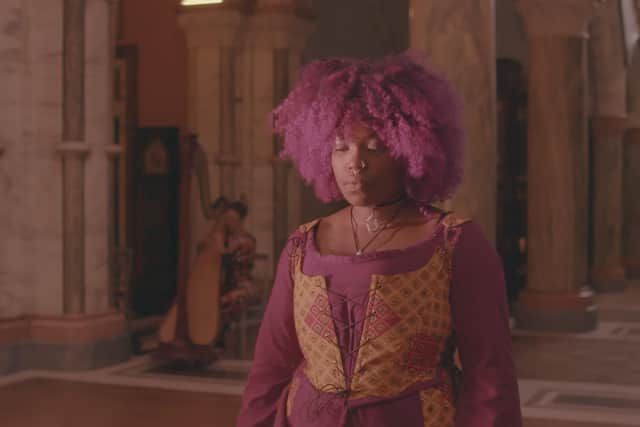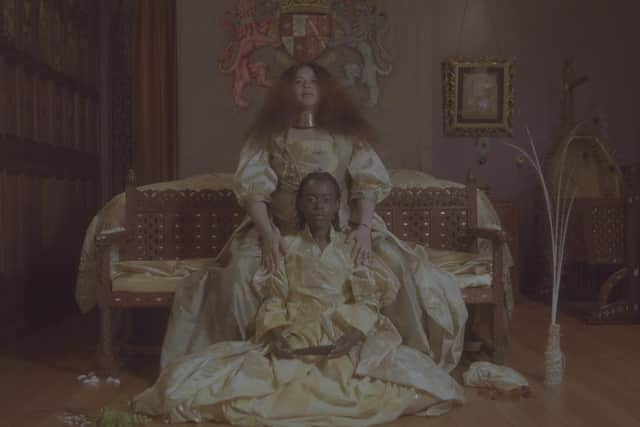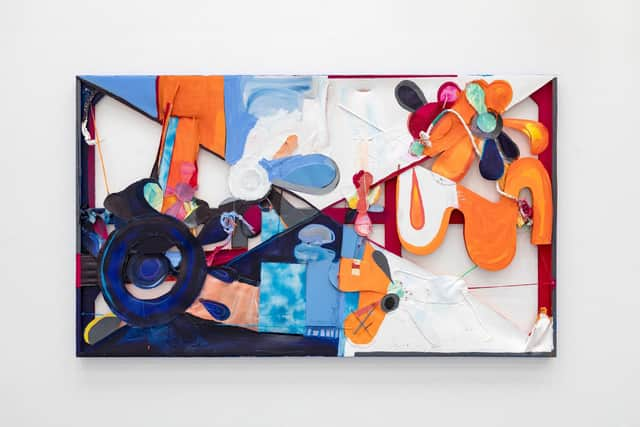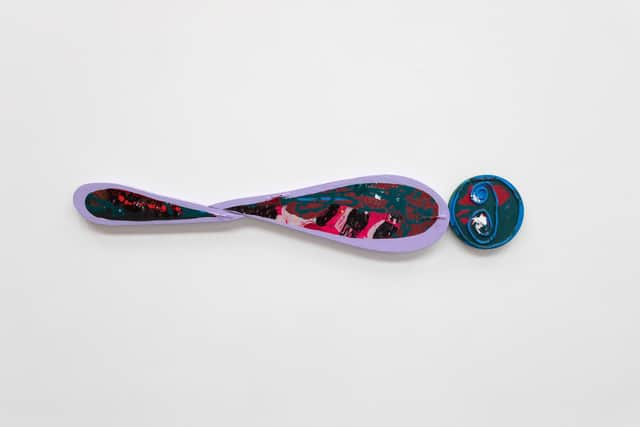Art reviews: Sekai Machache | Rachel Eulena Williams
Sekai Machache: Svikiro, Mount Stuart, Isle of Bute *****
Rachel Eulena Williams: Hair and Body, Dundee Contemporary Arts ***
Still catching up with projects post-pandemic, Mount Stuart on the Isle of Bute is offering two major contemporary art shows this summer. No sooner have Monster Chetwynd’s moths left the building than Sekai Machache’s work has moved in to occupy a range of spaces in this sumptuous neo-gothic house.
Advertisement
Hide Ad

Machache, whose reputation has grown steadily over the last five years, is Zimbawean-Scottish and has been selected to represented Zimbabwe at next year’s Venice Biennale. She is one of the group of collaborating black artists Alberta Whittle calls her “accomplices”, and enlists the help of many of the same artists here, including Whittle herself, to realise this ambitious project. Best known for her work incorporating still photography made in relation to colonial histories, here she makes a leap into film, and she doesn’t do it by halves.
Artists at Mount Stuart are invited to respond to aspects of the house or grounds, its history and archive, and Machache has chosen to engage with documents left by the Third Marquess of Bute, who had an enduring interest in religion, the esoteric and the occult. Svikiro is a Shona word for a mediator between the spiritual and human worlds, a person often gifted in dance, music or art, whose focus is on healing and the common good of the community.
Her 45-minute film of the same name plays out in Marble Hall, directly beneath the Third Marquess’ zodiac-themed stained glass windows and constellation-mapped ceiling. It’s a big work in all senses: beautifully filmed, with a rich poetic text (by Machache), gorgeous costumes (on which she collaborated with costume specialist Fiona Catherine Powell, elements of which are displayed around the house) and a soundtrack of original music, including a specially composed song (by Eyve Madyise and Trisha Margolis).
Then, around the house, elements from the film are extracted and expanded in the rooms in which the sections were originally performed: Mele Broomes dances in the Drawing Room, Eyve Madyise sings a capella in the Marble Chapel to an answering voice off-screen: “Svikiro!” “Tiripano” (“We are here”), and, in the Family Bedroom, Whittle and Machache braid cowrie shells into each other’s hair and enact a ritual involving honey.


This gives the whole thing a dream-like, ghostly quality. At one point, in the main film, we glimpse Machache in the background climbing the marble stair in her floor-length gown, very like a ghost. Objects and costumes left behind seem like the relics of a dream. In the Lady Bute Bedroom, one feels the need to check to make sure that Mele Broomes is not reclining on the same chair she has been occupying in the film we’ve just watched.
But there are different moods here beyond wistfulness: in a corridor, Whittle is filmed beating on the wall and floor with her hands, strong, goddess-like, angry. Perhaps what we are seeing is a range of different kinds of conjuring. Machache’s text conjures the past, suggesting, at one point, that the house itself is a dream evoked to escape from “the horrors of the hold”. But it is also one in which the imagination transforms the past: “Our captors did not recognise our faces; they did not bargain on how free we had become.”
Advertisement
Hide AdBy placing black women in costume in this richly decorated historic house, dreamed into being by wealthy white men, there is no avoiding this dialogue. But this is not the only thing going on. The larger theme, perhaps, is the magical power of the imagination to create other versions of the past which reinstate those who have been left out. In this way, the historical space is reclaimed and this makes possible (with any luck) a different kind of future.
Meanwhile, Brooklyn-based Rachel Eulena Williams, an artist at a similar age and stage to Machache, has her first solo exhibition in a UK institution at Dundee Contemporary Arts, presenting a major body of new work.
Advertisement
Hide Ad

Williams started out as a painter, but her work pushes out from that towards three dimensions. It is still largely wall-based but, one feels, only just: canvases are cut into, collaged with shapes cut from cardboard and MDF, tied with fabric and rope, as well as painted and overlaid with screenprints.
The complex multi-layered surfaces of the work are contained by strong shapes – many are round, a few rectangular. Some are divided into four by diagonal lines, with a different colour dominating each quarter. The layered elements are distinctive too: circular, petal- or tear-drop shaped, sometimes coalescing to make flowers. A looped shape which looks a bit like a capital “B” recurs as well. Elements of deconstruction are balanced with what feels like a strong urge to bind together, with rope, stitching, gathered fabric. Sometimes the armature is exposed and painted. At least one canvas is painted on the back in fluorescent orange, creating coloured shadows on the white wall.
Williams’ use of colour is described in the interpretation as “a rejection of Western art history’s preconceived notion of colour as ‘other’ – unruly, foreign, vulgar”, which puzzled me because it seems to ignore all those who have worked with bright shades through the 20th century, from Matisse to the Abstract Expressionists. It feels like it is this last group – largely male, largely white – which Williams’ work is most readily in dialogue with.
While her work, like theirs, is intuitive and physical, also like them, her application of colour is anything but random. Complementary and constrasting colours are carefully balanced: black and white with blue and orange; shades of purple with a dash of red. The works have a similar balance of physical energy and control.


There are hints, however, that something else is going on: a hammock, made of painted discs and rope, hung from the ceiling by one end; a mural which contains screenprinted photographs of lawyer and civil rights activist Florynce Kennedy; a first foray into video, which is collaged, like the paintings, but includes images of hair-braiding and nail colours. And especially the swing – a real one, made of wood and braided rope, on which viewers can sit (“gently rocking while feet are in contact with the floor” is recommended).
It makes sense that, if these objects were created in a way which is raw, physical, embodied, the viewer should engage with them in a way which is embodied, too. But there is something unresolved between what is hinted at: a conceptual engagement with the body, perhaps specifically the black female body, and what appears otherwise to look and feel like a rigorous abstract practice.
Sekai Machache until 29 October; Rachel Eulena Williams until 19 November